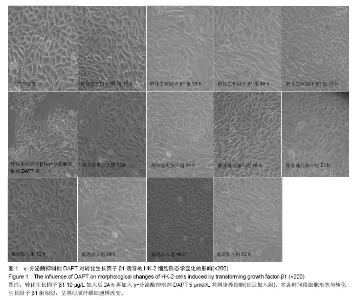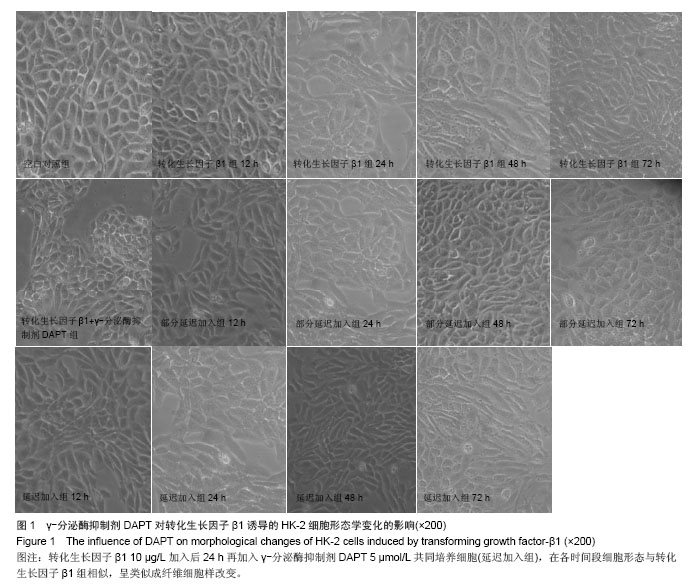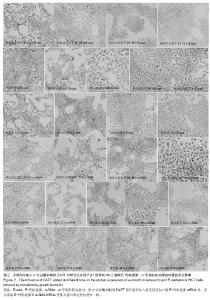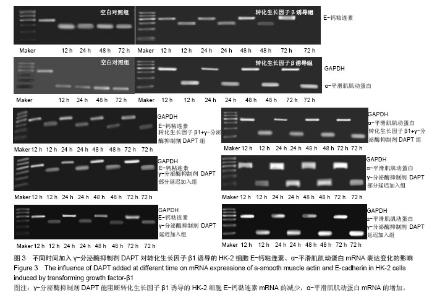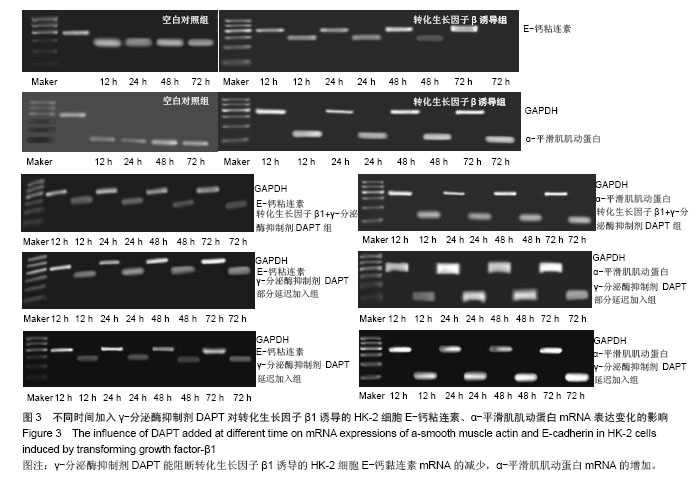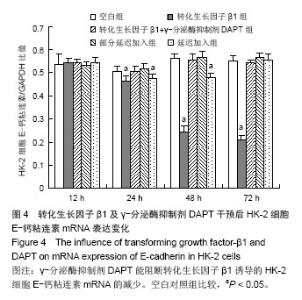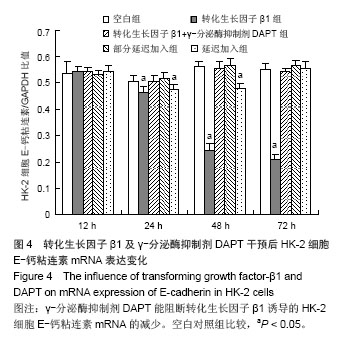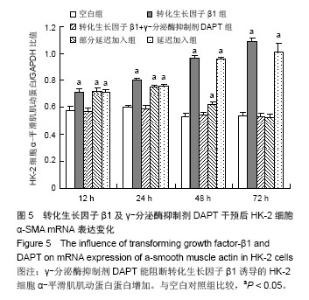| [1]Eddy AA.Molecular basis of renal fibrosis.Pediatr Nephro1. 2000;15(34):290-301.
[2]Badid C, Mounier N, Costa AM, et al. Role of myofibroblasts during normal tissue repair and excessives carring: interest of their assessment in nephropathies. Histol Histopathol.2000;15 (1):269-280.
[3]聂秀,吴人亮.转化生长因子β在肾小管间质纤维化中的作用[J].国外医学泌尿系统分册,2005,25(3):409-412.
[4]杨林,段惠军.骨形成蛋白-7在肾纤维化中的作用[J].河北医科大学学报,2006,27(3):225-227.
[5]Nickoloff BJ, Osborne BA, Miele L.Notch signaling as a therapeutic target in cancer: a new approach to the development of cell fate modifying agents, Oncoge-ne. 2003;22:6598-6608.
[6]Cheng HT, Kim M, Valerius MT, et al. Notch2, but not Notch1, is required for proximal fate acquisition in the mammalian nephron.Development.2007;134:801-811.
[7]Bolós V, Grego-Bessa J, de la Pompa JL. Notch Signaling in Development and Cancer.Endocrine Reviews.2006;339-363.
[8]Morrissey J, Guo G, Moridaira K, et al. Transforming growth Factor- beta induces renal epithelial jagged-1 expression in fibrotic disease.J Am Soc Nephrol.2002;13:1499-1508.
[9]Zavadil J, Cermak L, Soto-Nieves N, et al.Integration of TGF-beta/Smad andJagged1/Notch signalling in epithelial-to- mesenchymal transition. EMBO J.2004;23(5): 1155-1165.
[10]孙彬,王笑云,王宁宁,等.大鼠单侧输尿管梗阻后肾脏Notch/ Jaggedl的表达及其意义[J].南京医科大学学报,2006,26(11): 1009-1014.
[11]Nam Y,Aster JC,Blacklow SC.Notch signaling as a therapeutic target. Curr Opin Chem Biol.2002,6(4):501-509.
[12]Morohashi Y, Kan T, Tominari Y, et al. C-terminal Fragment of Presenilin Is the Molecular Target of a Dipeptidic γ-Secretase- specific Inhibitor DAPT (N-[N-(3,5-Difluorophenacetyl)-L-alanyl]- S-phenylglycinet-Butyl Ester), JBC. 2006;281(21): 14670-14676.
[13]Sjölund J, Johansson M, Manna S, et al. Suppression of renal cell carcinoma growth by inhibition of Notch signaling in vitro and in vivo.J Clin Invest.2008;118:217-228.
[14]Leong KG, Niessen K, Kulic I, et al.Jagged1-mediated Notch activation induces Epithelial-to-mesenchymal transition through Slug-induced repression of E-cadherin. J Exp Med. 2007;204(12):2935-2948.
[15]Thiruvur N. Inhibition of the Notch pathway reverses damage in amouse model of kidney disease.Nat Med,2008;14: 290-298.
[16]Noseda M, McLean G, Niessen K,et al.Notch activation results in phenotypic and functional changes consistent with endothelial- to-mesenchymal transformation. Circ Res. 2004; 94;910-917.
[17]Kalluril R, Neilson EG. Epithelial-mesenchymal transition and its imp-lications for fibrosis. J Clin Invest. 2003;112(12): 1776-1784.
[18]Perret E, Leung A, Feracci H, et al. Trans-bonded pairs of E-cadherin exhibit a remarkable hierarchy of mechanical strengths. Proc Natl Acad Sci USA. 2004;101(7): 16472- 16477. |
